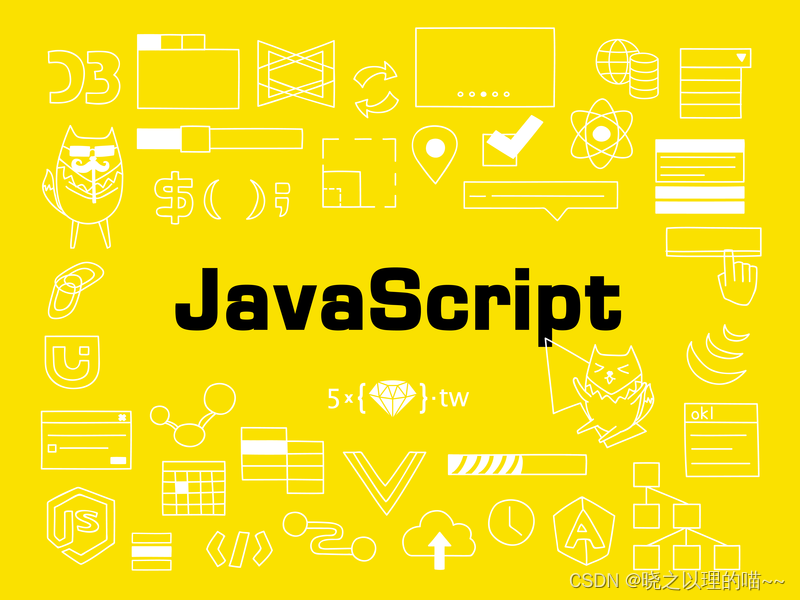
JavaScript的现代语法,箭头函数(Arrow Functions)是一个不可忽视的重要部分。它们不仅提供了更简洁的语法,还改变了函数的作用域规则。在这篇文章中,将深入研究JavaScript箭头函数的概念、语法、用法以及它们与传统函数表达式的区别。
什么是箭头函数?
箭头函数是ES6(ECMAScript 2015)引入的一种新的函数语法。它们提供了一种更简短的语法来声明函数,并且具有词法作用域的特性,即它们继承了父级作用域的this值。让我们通过一些例子来深入了解箭头函数的基本语法。
基本语法
// 传统函数表达式
const add = function(a, b) {return a + b;
};// 箭头函数
const addArrow = (a, b) => a + b;console.log(add(2, 3)); // 输出: 5
console.log(addArrow(2, 3)); // 输出: 5
在这个例子中,我们分别使用传统函数表达式和箭头函数来声明一个简单的加法函数。箭头函数的语法更为简洁,尤其适用于短小的函数体。
词法作用域
箭头函数具有词法作用域,这意味着它们继承了父级作用域的this值。看下面的例子:
function Counter() {this.count = 0;// 传统函数表达式setInterval(function() {this.count++;console.log('Traditional:', this.count);}, 1000);// 箭头函数setInterval(() => {this.count++;console.log('Arrow:', this.count);}, 1000);
}const counter = new Counter();
在传统函数表达式中,setInterval 中的函数会创建一个新的this值,导致this.count无法正确访问。而在箭头函数中,它会继承Counter函数的this值,使得this.count能够正确递增。
箭头函数的用法
1. 简化函数体
箭头函数在函数体较为简单的情况下能够提供更简洁的语法:
// 传统函数表达式
const square = function(x) {return x * x;
};// 箭头函数
const squareArrow = x => x * x;console.log(square(5)); // 输出: 25
console.log(squareArrow(5)); // 输出: 25
2. 没有this绑定
在箭头函数中,不存在this绑定的问题,它会捕获所在上下文的this值:
function Person() {this.age = 0;// 传统函数表达式setInterval(function growUp() {this.age++;console.log('Traditional:', this.age);}, 1000);// 箭头函数setInterval(() => {this.age++;console.log('Arrow:', this.age);}, 1000);
}const person = new Person();
在传统函数表达式中,growUp 函数的this值会变为window,导致this.age无法正确访问。而在箭头函数中,它会正确地捕获Person对象的this值。
3. 更简洁的返回语句
当函数体只有一个表达式时,箭头函数可以省略花括号并且自动返回表达式的值:
// 传统函数表达式
const multiply = function(a, b) {return a * b;
};// 箭头函数
const multiplyArrow = (a, b) => a * b;console.log(multiply(2, 3)); // 输出: 6
console.log(multiplyArrow(2, 3)); // 输出: 6
4. 适用于回调函数
箭头函数在处理回调函数时尤其方便,因为它们不会创建新的this值,避免了传统函数表达式中需要使用bind或者that等方式来确保正确的this值。
const numbers = [1, 2, 3, 4, 5];// 传统函数表达式
const squared1 = numbers.map(function(n) {return n * n;
});// 使用箭头函数
const squared2 = numbers.map(n => n * n);console.log(squared1); // 输出: [1, 4, 9, 16, 25]
console.log(squared2); // 输出: [1, 4, 9, 16, 25]
在这个例子中,箭头函数更加简洁,避免了传统函数表达式中的冗余代码。
箭头函数与传统函数表达式的区别
1. 没有arguments对象
箭头函数没有自己的arguments对象,它继承自父级作用域。这可能导致一些潜在的问题,因为修改箭头函数中的arguments会影响到父级作用域。
function traditionalFunction() {setTimeout(function() {console.log(arguments); // 输出: [1, 2, 3]}, 100);
}function arrowFunction() {setTimeout(() => {console.log(arguments); // 输出: Uncaught ReferenceError: arguments is not defined}, 100);
}traditionalFunction(1, 2, 3);
arrowFunction(1, 2, 3);
在箭头函数中,尝试访问arguments会导致Uncaught ReferenceError。如果需要使用参数,可以使用剩余参数语法...args。
2. 没有prototype属性
箭头函数没有prototype属性,因此无法作为构造函数使用,不能通过new关键字来实例化。
const TraditionalConstructor = function() {};
const ArrowConstructor = () => {};const instance1 = new TraditionalConstructor(); // 正常
const instance2 = new ArrowConstructor(); // 报错: ArrowConstructor is not a constructor
3. 不能用作Generator函数
传统函数表达式可以通过function*语法声明Generator函数,而箭头函数不支持这种语法。
function* traditionalGenerator() {yield 1;
}const arrowGenerator = function*() { // 正确yield 1;
};const arrowGeneratorError = *() => { // 报错: Unexpected token '*'yield 1;
};
总结
在本文中,深入研究了JavaScript箭头函数的概念、语法和用法。箭头函数不仅提供了更简洁的语法,还解决了传统函数表达式中this值的问题。我们探讨了箭头函数在不同场景下的应用,包括简化函数体、避免this绑定问题以及作为回调函数的方便性。
然而,也强调了箭头函数与传统函数表达式之间的一些区别,如缺少arguments对象、没有prototype属性以及不能作为Generator函数使用等。在实际项目中,合理选择箭头函数或传统函数表达式取决于具体的需求和上下文。

)





)
![[Swift]RxSwift常见用法详解](http://pic.xiahunao.cn/[Swift]RxSwift常见用法详解)





)
)



)